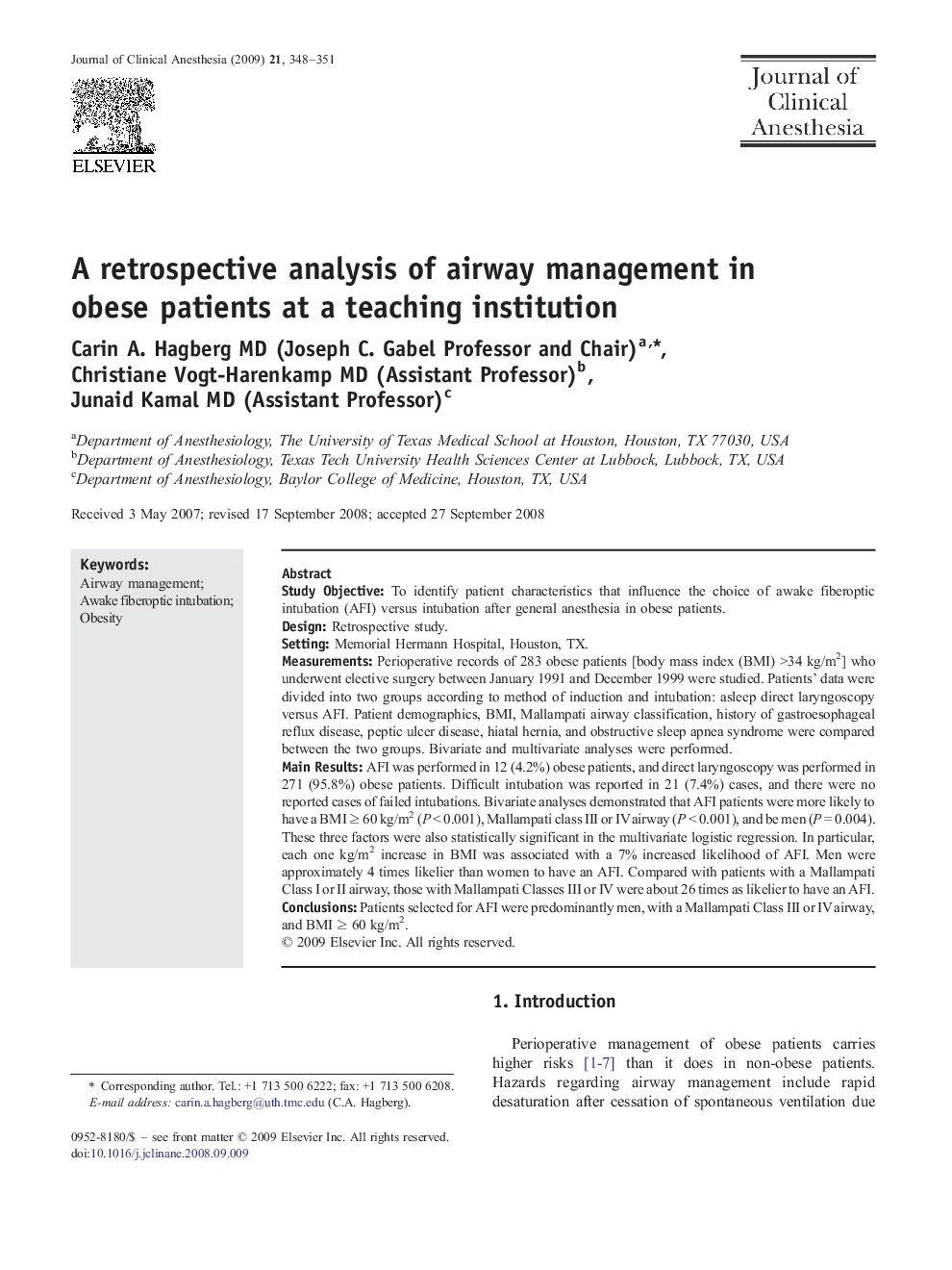| Article ID | Journal | Published Year | Pages | File Type |
|---|---|---|---|---|
| 2763551 | Journal of Clinical Anesthesia | 2009 | 4 Pages |
Study ObjectiveTo identify patient characteristics that influence the choice of awake fiberoptic intubation (AFI) versus intubation after general anesthesia in obese patients.DesignRetrospective study.SettingMemorial Hermann Hospital, Houston, TX.MeasurementsPerioperative records of 283 obese patients [body mass index (BMI) >34 kg/m2] who underwent elective surgery between January 1991 and December 1999 were studied. Patients' data were divided into two groups according to method of induction and intubation: asleep direct laryngoscopy versus AFI. Patient demographics, BMI, Mallampati airway classification, history of gastroesophageal reflux disease, peptic ulcer disease, hiatal hernia, and obstructive sleep apnea syndrome were compared between the two groups. Bivariate and multivariate analyses were performed.Main ResultsAFI was performed in 12 (4.2%) obese patients, and direct laryngoscopy was performed in 271 (95.8%) obese patients. Difficult intubation was reported in 21 (7.4%) cases, and there were no reported cases of failed intubations. Bivariate analyses demonstrated that AFI patients were more likely to have a BMI ≥ 60 kg/m2 (P < 0.001), Mallampati class III or IV airway (P < 0.001), and be men (P = 0.004). These three factors were also statistically significant in the multivariate logistic regression. In particular, each one kg/m2 increase in BMI was associated with a 7% increased likelihood of AFI. Men were approximately 4 times likelier than women to have an AFI. Compared with patients with a Mallampati Class I or II airway, those with Mallampati Classes III or IV were about 26 times as likelier to have an AFI.ConclusionsPatients selected for AFI were predominantly men, with a Mallampati Class III or IV airway, and BMI ≥ 60 kg/m2.
